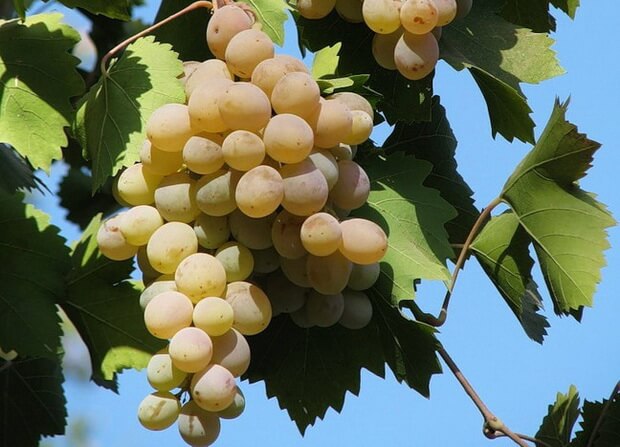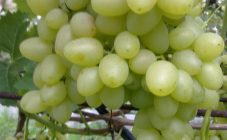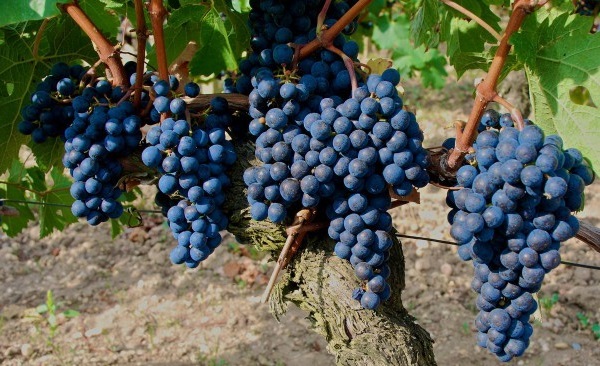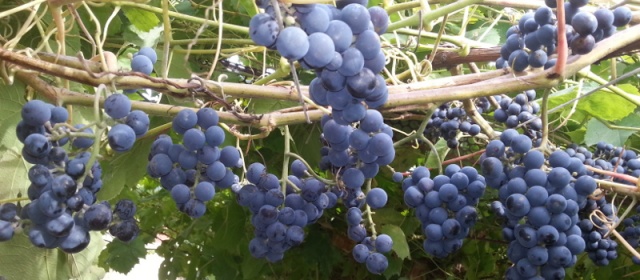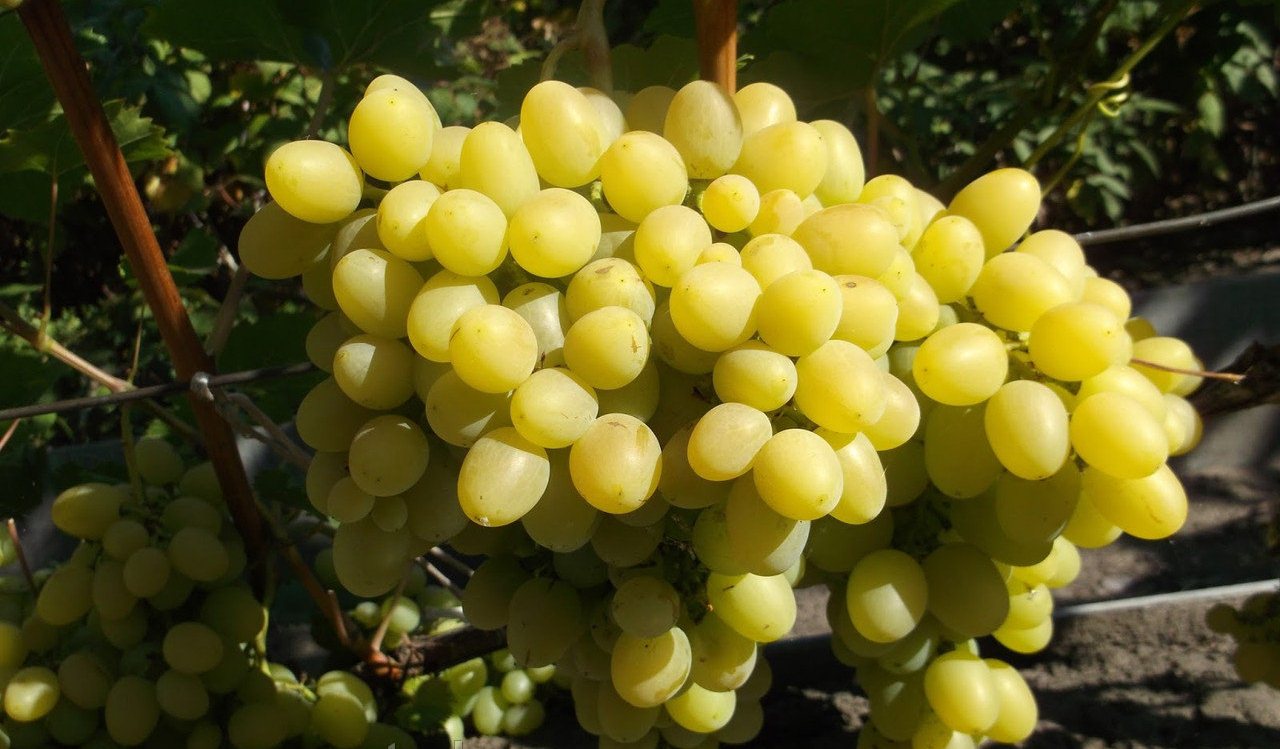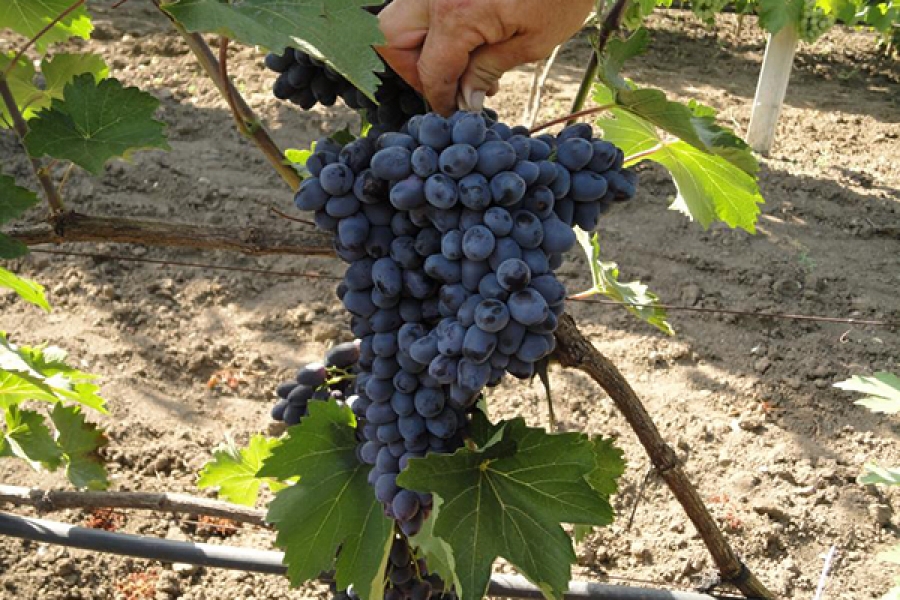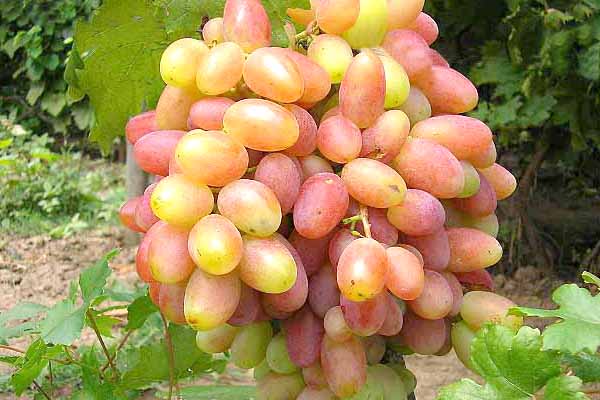Content:
The Bianca grape belongs to the wine family. It is intended for preparation of white table and fortified drinks. Differs in excellent taste. Original vodka with a spicy aroma is obtained from the pomace.
Description of the variety
Outwardly, Bianca grapes look like a low-growing vine with dark foliage of small size with abundant bunches. The berries are covered with a dense thin skin. The grapes are juicy and contain a lot of juice. In this plant, fruit buds are laid every year, and the ripening of fruits occurs very rapidly.
The description of the plant indicates that the home grape variety Bianca is a hybrid. This variety was developed by Hungarian winegrowers back in 1963. During the formation of the species, they crossed two grape bushes - Villard Blanc and Chasselas Bouvier.
Viticulture is gaining momentum every year. Amateur gardeners are interested in the question of what care should be in the middle lane and the Moscow region. How to properly plant a vineyard? This variety is credited with good fruiting. In some zones of the Russian Federation, harvest is already in August. In this case, small cupped-shaped bushes are planted according to the scheme 3-3.5x0.5-0.7 m.
Care features
This family of vineyards is considered unpretentious, but traditional care must still be present. Bianca pleases the owners with a rich harvest, if initially planted in moist soil. In the hot season, the plant needs abundant watering.
Sometimes small holes are made near the bush, and for the plantation - a shallow trench along the bushes. This is where you need to pour water. After watering, the pits are covered with earth. For the soil to be able to maintain moisture for a long time, the earth must be loose.
In the spring, the vineyards are fertilized with minerals. Take a glass of superphosphate and half a glass of ammonium sulfate. This amount of solution falls on one shrub. The prepared composition contains a large amount of phosphorus, which is so necessary for the formation of inflorescences and productivity. Thanks to nitrogen, the shrub actively grows and bears fruit.
Several methods of fertilizing:
- Between rows of shrubs, holes should be dug up to 40 cm deep, where fertilizer is dropped. Sprinkle the top with earth.
- At a distance of 0.5 m from the bushes, holes are dug, where fertilizers are spread and covered with earth. After harvesting, the bushes should be fed with manure. This method will allow not to purchase fertilizer for the next year. Among other things, they do the procedure for cutting the bushes, leaving up to 35 shoots.
Table of characteristics of the vine of the Bianca family
| Characteristics of the Bianca family | |
|---|---|
| Bianca's parent couple | Chasselas Bouvier and Villars Blanc |
| Homeland of the species: | Hungary |
| Main features of Bianca | |
| Purpose: | technical |
| Ripening time: | early |
| Productivity: | high |
| Taste: | harmonious, sometimes with honey and floral shades |
| Colour: | yellow-green |
| Frost resistance: | up to - 27 ° C |
| Description of the bunch | |
| Bunch weight: | 150-200 gr. |
| Bunch density: | dense |
| Description of grapes | |
| Berry shape: | rounded |
| Berry weight | 1-3 gr. |
| Diseases | |
| Disease resistance: | Resistant to mildew, oidium, gray mold, phylloxera. |
How to properly plant a vineyard
The planting of vineyards begins at the end of March. The third week is the ideal time to plant. But in some areas, a similar process takes place in April. During planting, the weather should be appropriate - the air temperature should not be lower than +10 degrees, and the soil should be warm.
It is necessary to plant cuttings at a distance of at least 70-75 cm. The interval between the beds remains up to 3 m. The deeper the root system of the plant is set, the longer it will survive frosts.
How to choose the right soil for planting
If you choose the right place for planting a vineyard, then soon you can enjoy the richness of the harvest. Suitable for Bianchi:
- A place where there is no wind and drafts.
- Bright area.
- Sublime territory. This will keep the soil at a normal moisture level; excessive moisture leads to the appearance of pathogens.
- Weakly acidic or neutral soil. To add alkali to the soil, you need to add lime, chalk or peat. A similar procedure is carried out several months before disembarkation. Then the process is repeated every 5 years.
Diseases and pests of vineyards
This preferred variety for many gardeners has a certain advantage - the bushes are resistant to fungal infections (gray rot, mildew, oidium). In fact, grapes have a lot of diseases. Do not forget about chlorosis, anthracnose, bacteriosis and bacterial cancers.
Every year, gardeners fight with birds and wasps and in every possible way protect the plant from significant damage that insects bring to the crop. As soon as the fruits ripen, the birds immediately decide to peck them.
Every gardener fights garden pests in his own way. All is fair here. Firecrackers, ribbons, scarecrows are used. But all these are temporary and ineffective measures. Covering the vine with a protective net is an effective method. Mosquito, fishing or army gear is suitable for these purposes.
They are protected from wasps as follows:
- destroy hornets' nests;
- set traps (cans, bottles). A syrup mixed with an insecticide is poured into the bottom of a half-liter container.
Despite the resistance to disease, Bianca grapes are susceptible to Alternaria, therefore, it is necessary to regularly carry out prophylaxis with fungicides.
